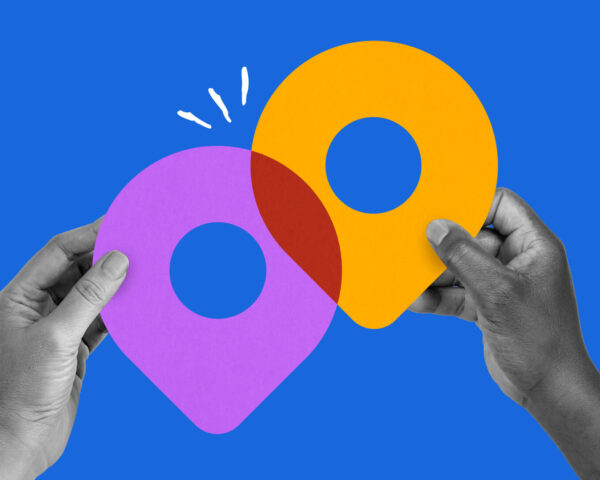A comprehensive list of common terms we use to talk about modern teams and they ways they work.
Most teams in the modern organization are doing distributed work. In fact, every single enterprise executive told us their teams work in a distributed way in an Atlassian survey. Even if you go into an office five days a week, it’s likely you’re still working with people spread across different locations and time zones. That’s just our new reality.
And with it, comes a new way to think, and talk. We’ve compiled some of the most common concepts arising from this paradigm shift to prepare you for your next modern work conversation.
Basic terms
Remote work: A location-based work model in which employees do not have the option to report to an office, instead completing their jobs from home or a co-working space.
Distributed work: A work model that describes how work gets done, not where. Distributed work is done online (vs shoulder-to-shoulder). Most knowledge workers use the internet to collaborate across a distributed network, most of the time, regardless of where they’re working. Learn more
Hybrid work: A partly remote work model that requires employees to report to a physical office for a designated amount of time.
Return to office / RTO: A workplace mandate to return to a physical office.
Async work: Teamwork that happens when you communicate or collaborate without needing everyone to be present at the same time. Examples include sending an email, video, or Slack message, or leaving a comment on a document.
Sync work: Teamwork that happens in real time, whether in-person or virtual, scheduled or impromptu. Examples include hosting meetings or Slacking back and forth in real time.
Offsites / onsites: Meetings or gatherings held inside or outside of the workplace, designed to bring team members together for team bonding and deeper collaboration toward a desired outcome. Learn more
Timing and scheduling
Flex schedule: A work schedule that lets employees choose their working hours according to their individual needs and preferences, as opposed to a traditional work schedule, which mandates that workers do their jobs during specific hours (e.g., 9 to 5).
Non-linear workdays: A flexible work schedule that specifically accounts for employees breaking up their workdays according to their personal needs and productivity patterns, instead of imposing consecutive eight-hour workdays. Learn more
Timeboxing: a time management technique where you block off a specific amount of time to work on specific tasks. Learn more
Maker time: A timeboxed block of time specifically reserved for work on creative or complex tasks that require deep, uninterrupted focus.
Deep work: A state of focused and distraction-free work on important, cognitively demanding tasks. These tasks often involve creative or strategic thinking and may be aligned to the core purpose of an individual’s role.
Focus time: Dedicated windows of time reserved for making progress on tasks, and which are free from meetings, notifications, and other interruptions.
Meetings and team communication
Open collaboration time: Hours of workday overlap where key collaborators across distributed teams will be online. Learn more
Meeting fatigue: A barrier to workplace productivity that occurs when excess meetings impede employees’ ability to complete their tasks within their allotted workday hours, potentially requiring overtime work. Learn more
Atlassian-specific terms
Team Anywhere is Atlassian’s approach to distributed work. Since 2020, Atlassians have been able to choose to work from home, one of our 12 global offices, a mix of both, or somewhere else entirely.
Given that we’re highly distributed, we’ve needed to get really good at collaborating online.
We don’t have everything figured out, but we’re already seeing clear business benefits to our evidence-based approach. Read more about what we’ve learned so far.
Page-led meetings: A focused approach to meetings in which participants refer to a document (the “page), prepared in advance, that outlines the context, goals, and key decisions to be addressed. Learn more and Try the Play
Intentional togetherness: An approach to designing in-person gatherings that deliberately centers on building relationships and ensuring alignment within distributed teams, in place of regular office attendance. Learn more
Team gatherings: In-person gatherings that are purposefully organized to allow distributed team members to bond and advance key projects.
Connection boost: The phenomenon in which distributed team members show significantly increased levels of connectedness immediately after an in-person gathering. Learn more
Connection decay: The phenomenon in which distributed team members show gradually diminishing levels of connectedness the longer they’re apart, reaching pre-gathering levels around the four-month mark. Learn more
Team Anywhere: Atlassian’s approach to distributed work. Since 2020, Atlassians have been able to choose where and how they work best, every single day.
Teamwork Lab: An Atlassian research initiative, led by behavioral scientists, dedicated to unleashing the potential of every team by designing and validating best practices for modern work.
Ways of Working: An organizational framework that considers the practices, tools, and principles that inform how team members work together to best achieve common goals. Learn more
Special thanks to Kelli Korducki for her contributions to this article.



